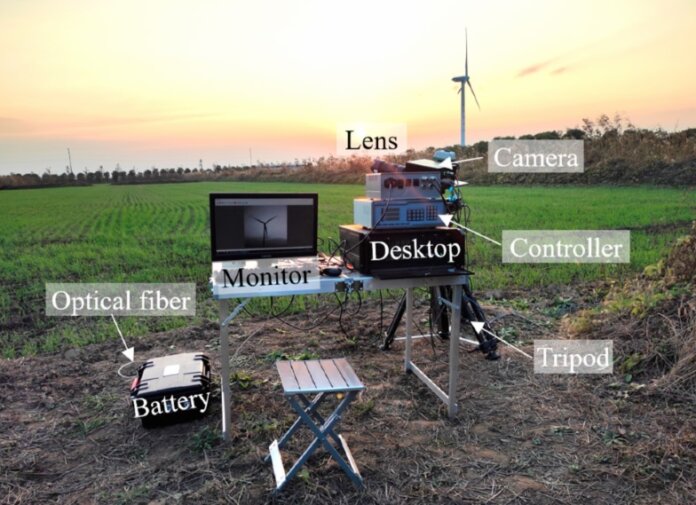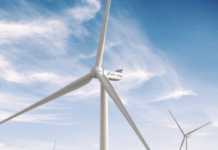Researchers at Zhejiang University in Hangzhou, China, are working to improve the wind turbine blade inspection process by using stereo digital image correlation (DIC) for examining large blades while they are in use.
The efficiency of electricity generation is significantly impacted by the condition of wind turbine blades. A full-scale blade’s efficiency in generating power is reduced when its structural or aerodynamic properties are compromised. If a defective blade is permitted to continue operating, it can cause other wind turbine components to break down or cause an accident.
As a result, full-scale blade structural health monitoring (SHM) is crucial. The current mainstream contact-based blade fault measurement methods include strain gauge measurement, vibration measurement, acoustic measurement and electromagnetic measurement. However, these methods are only for inspection when a blade is static. Many problems can only be detected while a blade is in operation. Also, current inspection methods have proven costly and complex.
Stereo DIC typically uses multiple cameras to capture structural images from different perspectives. Pattern recognition techniques are applied to compare these patterns frame by frame to measure 3D displacement, deformation and motion.
In the experiments, the researchers used 47-meter-long blades from a 2 MW turbine. Because the images of the blades acquired by the stereo cameras lack the requisite gray gradient necessary for correlation matching, scientists applied random speckle patterns to the pressure side of the all-white blades.
Scientists constructed a measurement station featuring an imaging system consisting of two Mikrotron EoSens CoaXPress cameras with a CMOS global shutter set at 5120 x 5120 pixels @ 80 frames-per-second (fps). The cameras were equipped with 75 mm focal length lenses. To manage the 80 fps image transfer over a single coaxial cable, a four-lane CoaXPress frame grabber card capable of 6.25 GB/sec per lane was built into an Intel Core i7 CPU-based PC. The coaxial cables also carried the necessary power to the cameras by PoCXP, along with the controls and communication.
The distance between the wind turbine and the Mikrotron cameras was approximately 250 meters. Two cameras were placed 64 meters apart to get the ideal field of view (FOV) angle, which made it easier to reconstruct the points of Interest in 3D. A pan-tilt controller adjusted the positions of the cameras to ensure that the entire blades were in the FOV. When one of the three full-scale blades on the turbine was roughly perpendicular to the ground, the cameras began recording. The frequency spectrum of the blades’ observed 3D displacements was contrasted with that of faulted blades.
The outcomes demonstrated that the proposed stereo DIC method is practical and non-destructive for SHM of fully operational wind turbine blades.
As this was an initial experiment, the scientists say measurement errors brought on by light refraction, fluctuations in illumination, and transmission delays must be taken into account. They plan to use a deep learning model to precisely identify and diagnose blade flaws in their next phase.




